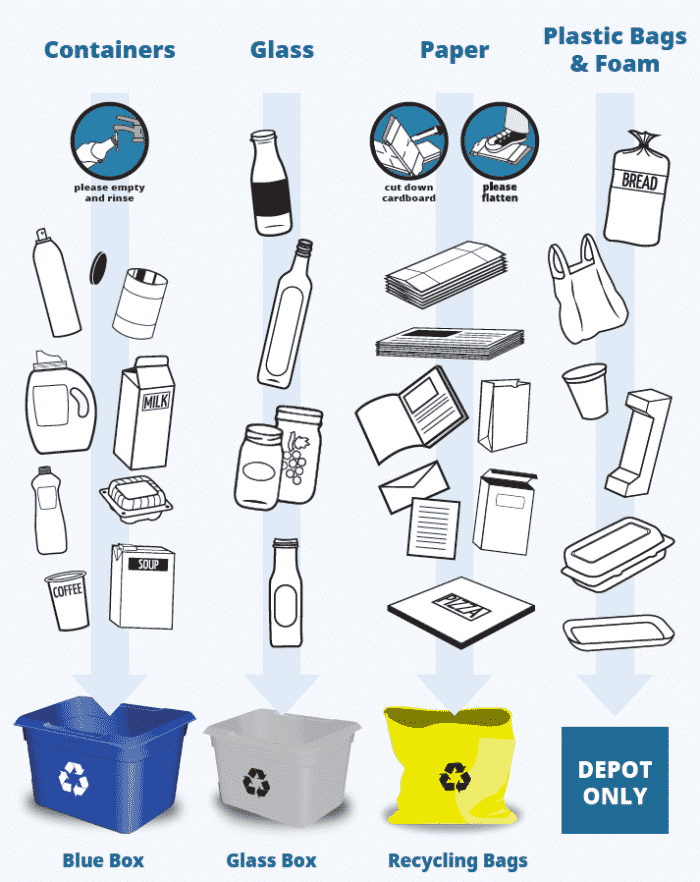If you read through the detailed list of materials that are accepted or not accepted in the Multi-Material BC (MMBC) residential packaging and printed paper recycling program, you might have some questions about why some items are not accepted.
Some of the packaging that is not accepted is made from two or more different types of materials—for example, paper with foil, which you might see used in take-out containers, that, once combined, cannot be separated into foil and paper again. The paper is incompatible with the foil recycling process and the foil is incompatible with the paper recycling process. There is no recycling use for the combination of paper with foil.
“Blister” packaging that is moulded plastic with a foil backing (for example from gum or medication) is similarly problematic. The foil and the plastic together are incompatible in the recycling process, which is why MMBC does not accept this type of packaging.
Another example is packaging made with multiple layers of plastic, for example the soft packaging for perishable foods such as meat and poultry or cheeses. The layers serve different purposes, one of them being to prevent air or moisture from spoiling the food inside. Once they are combined together, the layers cannot be separated, and there is currently no recycling use for the combination of plastics.
MMBC will work with material re-manufacturers to explore opportunities to modify the specifications of the materials they accept and develop new uses for materials that are currently unrecyclable, so that we can begin to incorporate the types of packaging that are currently not recyclable into the collection system.
Until then, please refrain from including these packages with your recycling.
It’s important to note that some combinations of materials are compatible in the recycling process, and packaging made from those combinations is accepted in the MMBC program. For example, consider milk cartons, which use layers of plastic and paper. In the recycling process, the paper fibres become a slurry and the plastic remains in sheets that can be screened out.
To avoid confusion, check your recycling guide or the MMBC website for a full list of materials accepted in the program.


